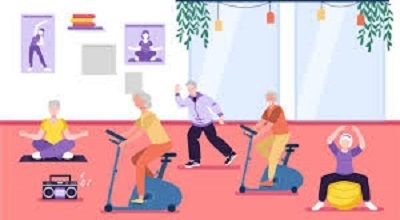Fitness programs for different age groups
Designing fitness programs tailored to different age groups is important because individuals at different stages of life have varying needs, abilities, and health considerations. Here are general guidelines for creating fitness programs for different age groups:
Children (Ages 6-12):
Focus on Play and Fun:
- Encourage activities like running, jumping, and playing sports.
- Include games that promote coordination and balance.
Strength Training:
- Use bodyweight exercises and light resistance to develop strength.
- Emphasize proper form and technique.
Incorporate Variety:
- Include activities that promote flexibility, such as gymnastics or yoga.
Limit Screen Time:
- Encourage outdoor activities to promote physical activity.
Adolescents (Ages 13-18):
Cardiovascular Exercise:
- Introduce aerobic activities like running, swimming, or cycling.
- Aim for at least 60 minutes of moderate-to-vigorous exercise per day.
Strength Training:
- Gradually introduce resistance training with proper supervision.
- Focus on full-body exercises and core strength.
Flexibility Training:
- Include dynamic stretching before exercise and static stretching afterward.
Sports-Specific Training:
- Tailor programs for those involved in specific sports.
Adults (Ages 19-64):
Cardiovascular Exercise:
- Aim for at least 150 minutes of moderate-intensity aerobic exercise per week.
- Include activities like jogging, brisk walking, or dancing.
Strength Training:
- Engage in resistance training at least twice a week, targeting major muscle groups.
Flexibility and Balance:
- Include stretching exercises and balance training to maintain joint flexibility.
Incorporate Variety:
- Mix up workouts to prevent boredom and target different fitness components.
Consider Health Conditions:
- Individuals with health conditions should consult with healthcare professionals for personalized advice.
Older Adults (65+):
Low-Impact Cardiovascular Exercise:
- Engage in activities like walking, swimming, or cycling to reduce joint stress.
- Aim for at least 150 minutes of moderate-intensity exercise per week.
Strength Training:
- Focus on functional movements and use light resistance.
- Include exercises to maintain bone density.
Flexibility and Balance:
- Prioritize activities that improve flexibility and balance to prevent falls.
- Include yoga or tai chi.
Joint Mobility:
- Incorporate exercises that promote joint health.
Adaptations for Health Conditions:
- Tailor programs are based on individual health concerns, considering chronic conditions and medications.
Remember
Always consult with a healthcare professional before starting a new fitness program, especially for individuals with existing health conditions or concerns. Additionally, individual preferences and capabilities should be considered when designing and adhering to a fitness program.
